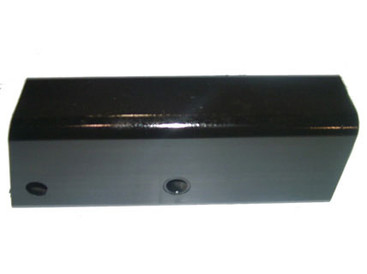
This can be used in addition to other weight distribution and sway control systems.Īverage Cost: $400 to $500 What If I Start to Sway?Įven with the best sway bars, stabilizers, and careful packing, you’re bound to encounter sway. When sway is detected, it pulses your trailer brakes automatically to keep the trailer tracking straight. If you do start to sway when towing your travel trailer, it’s useful to have a device that electronically monitors forces on your trailer. This type of sway control is most useful for smaller towing situations as opposed to longer trailers.Īverage Cost: $50 to $75 Electronic Tow Control Friction sway control bars are cost-effective but interfere with the trailer’s ability to turn, so they need to be removed when backing up or driving in slick conditions. They come in a right-hand or left-hand application and one or both can be used for additional sway protection. Friction Sway Control Barsįriction sway control bars can be added to any hitch, and use friction to prevent the towed vehicle from swaying and bring it back into alignment.

The cams prevent sway but unlock when the trailer needs to turn.Īverage Cost: $300 to $500 Example of a dual cam sway control system. It attaches near the hitch and hooks onto either side of the trailer. Popular brands include Equal-i-zer, Blue Ox SwayPro, Husky Towing Center Line.Ī dual cam sway control system is useful for large trailers. These are generally a little more expensive but can save hook-up time and storage space when not in use. Popular brands include Reese, CURT, and Camco.Īnother type of weight distribution system uses a built-in sway control feature that adds additional sway protection without adding a separate friction control device. The result is a smoother and more level driving experience. A typical weight distribution system uses spring bars attached to the hitch to distribute the load evenly between the axles on the tow vehicle. You should use a weight distribution system if your travel trailer is at least 50 percent as heavy as your towing vehicle, or the rear of your tow vehicle sags when the trailer is hooked up. Make sure any weight distribution or sway control setup you purchase is rated to your towing weight and your tongue weight. Trailer weight distribution systems and sway control bars can be separate components, or in some cases, the sway control device can be built into the weight distribution system. There are several common types that all work a bit differently and come at varying price points. Sway controls use a friction type device to prevent the trailer from easily swaying from side to side. This allows the tow vehicle to ride more level and have more control because the proper weight will be on the steering tires. Weight distribution systems distribute a portion of the trailer’s tongue weight from the back of the tow vehicle to the front. Related 12 Tips for Towing Your Trailer Properly How Do Weight Distribution Systems and Sway Control Bars Help? Make sure you don’t exceed the GVWR or GAWR and test after adding propane or water you plan to use during travel.

If it’s very windy, it may not be a good day to travel.

There are a few simple, practical things you can do to reduce the risk of sway. Weight distribution and sway prevention systems make for a safer and smoother ride. Even a small amount of sway can be exhausting for a driver, forcing constant steering adjustments. The most common causes of sway are gusts of wind, drafts from passing semi-trucks, turns on curvy roads, and imbalanced loads in the trailer.

Feeling your travel trailer sway from a gust of wind is scary, but there are products and strategies that can help reduce sway and keep your RV aligned. When it comes to RVing, sway is best saved for the hammock.


 0 kommentar(er)
0 kommentar(er)
